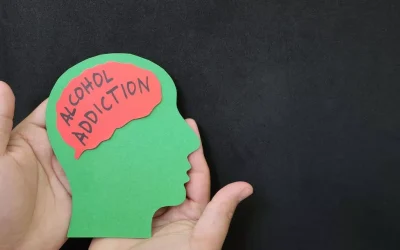How Can Art Help in Addiction Recovery? Gateway Rehab
In a group therapy setting, role-playing and dramatic expression help you relate to others, opening up to share experiences and emotions in a supportive environment. An art therapy session typically involves the participant working on an art project while the therapist observes their work, asks questions, and helps the participant to work through the insights obtained through their art. Often, the therapist will guide the participant through specific art projects with the goal of helping them to understand both their addiction and their recovery. Oftentimes there is trauma, compulsion, and pain involved in substance use disorders. Such types of addictions, called co-occurring disorders, require patients to heal the underlying trauma and provide awareness. If a patient suffers from alcoholism and depression, the therapist can be present to notice any patterns and inform the participant of observations.
- In this article, expressive arts therapist Shelley Klammer explains the wider benefits of expressive journaling.
- Human beings have used expressive arts as healing modalities since ancient times (Malchiodi, 2020).
- It can be a calming yet effective therapy to help you move forward in your journey toward recovery.
- If a patient suffers from alcoholism and depression, the therapist can be present to notice any patterns and inform the participant of observations.
- Art therapy is often considered a complementary and alternative medical (CAM) practice.
Bill Creating Transportation Services to Addiction Treatment Proposed in New York State
Art therapy sessions with a trained art therapist in your community, whether solo or in a group setting, can be a valuable way to reflect on your SUD, its causes, and your recovery. Art therapy occurs in a wide range of settings and individual art therapists may alter how they practice to suit the needs of their clients or the institutions where they are practicing. There are countless studies2 that have proven the efficacy of art therapy in relation to mental health and substance abuse disorders. There is definitive proof that art therapy can help people deal with many problems, including emotional distress, emotional trauma, mental disorders, and substance abuse disorders.
Art Therapy: Create To Recover
- Containment allows clients to use visual representations to contain difficult thoughts and experiences that might arise during therapy.
- Many people stop drawing or creating art as they get older, and unfortunately, we’re no longer encouraged to use creative expression in our daily lives.
- Her immense guilt seemed to rule her decision-making more often than not, and it seemed to extinguish any instincts she may have felt with regard to self-care.
- The goal of art therapy for addiction is to find an alternative form of communication that allows those in addiction recovery from substance abuse to express their experiences.
- Art therapy for addiction recovery is a treatment that uses the power of art to help an addict express and explore their emotions and feelings, in a safe and non-judgmental setting.
- This activity can also be continued between sessions as an adjunct to therapy then discussed during sessions.
The focus of these sessions is never on artistic skill or developing talent – it’s not even about creating something aesthetically pleasing. The goal is to allow you the opportunity to express yourself in imaginative, non-verbal ways. If you’re in a group setting, you, the therapist, and your group members can begin to understand the conflicts or triggers that are leading to your current emotions. Together, you can draw on shared experiences to tackle these issues and suggest ways to resolve them productively.
Art Therapy And Mental Health
People with SUD who have previously felt defeated and isolated from the world can reconnect with it once again through art. However, when you finally do meet with others who understand what you’re going through, it becomes easier to express yourself and discuss how you feel. Using art can be an effective tool in helping you communicate your feelings without words. When we say distraction, we are referring to your ability to shift your focus from the urge to use substances to release your energy in another, healthier way. Distraction is not always effective or desirable; for example, distracting yourself with TV every time you’re stressed isn’t productive and can actually impede you from getting work done.
Individualized, evidence based treatment, to fit your needs.
Art brings people together, and whatever you choose to create will bring in new connections who can have whatever role you want them to in your recovery. These people aren’t here to judge but can help you interpret what you’ve expressed, share their own artistic works, and more. Whether you want to draw a comic depicting the situation or simply create an art piece that represents your feelings at the time, you are staying focused on the moment and how you feel in the present.
Former addict mounts abstract art exhibition – Advertiser and Times
Former addict mounts abstract art exhibition.
Posted: Tue, 25 Jul 2023 07:00:00 GMT [source]
ECHO Recovery is a nonprofit foundation and education organization intended to provide tools and resources to those struggling with SUD. We are proud to offer a housing program for those who wish to seek recovery art therapy for addiction and continue our efforts to help people find healing through the power of art. For example, consider how the brain can only hold so much information, and it can be difficult to process it all internally.
For this activity, you will need drawing pencils, ink pens, felt pens, colored pencils, pastels, chalks, crayons, acrylic and/or water paints, and brushes. Filmmaking is another powerful expressive art form that is now available to most of us, given we can all make videos with our smartphones and edit them with various low-cost or free video-editing apps online. Movement can be a powerful form of self-expression to connect to the wisdom of the body and its innate healing capacity. Before you continue, we thought you might like to download our three Positive CBT Exercises for free. These science-based exercises will provide you with detailed insight into Positive CBT and give you the tools to apply it in your therapy or coaching. Medical detox at Gratitude Lodge streamlines the withdrawal process and helps you overcome physical dependence on drugs or alcohol.
Watercolor Your Emotions
- Art therapy, as defined by AATA (American Art Therapy Association), is a diverse mental health intervention that improves the lives of individuals, families, and communities.
- Get professional help from an online addiction and mental health counselor from BetterHelp.
- Through collaborative projects or individual work shared with the group, participants can give and receive feedback, support, and encouragement.
- In either setting, producing the artwork will be followed by a discussion where the client/s and therapist discuss together what the piece of art depicts and what can be learned from it in a completely non-judgemental way.
- A client of a prominent east coast drug and alcohol rehabilitation facility bounced into group one morning eager to share the arts and crafts project she had been assigned to complete the week prior.
- Creative arts therapists tend to be expert arts practitioners in one specific area who have gone on to train in a specific type of creative arts therapy (Stuckey & Nobel, 2010).
If you are considering a career in art therapy, it’s worth noting that the field is expected to grow. The U.S. Bureau of Labor Statistics predicts that the field will expand by 8% in the decade that began in 2019. The number of studies on art therapy treatment and SUDs remain relatively small, however, so scholars need more evidence to determine the therapy’s effectiveness.

Seeking treatment from experienced rehab and recovery professionals can increase your odds of kicking your old habits and preventing relapse in the future. Creating these structured patterns can feel relaxing, and you can even color them in with pens or pencils https://ecosoberhouse.com/ once you’re done. Group members are invited to think of a scenario in which they felt they had difficulty accessing their wise mind. To encourage exploration of the mind states, the facilitator can assign a more specific role to each state of mind.

